Signs of Heroin Addiction

Naloxone won’t harm someone if they’re overdosing on drugs other than opioids, so it’s always best to use it if you think someone is overdosing. Medication-assisted treatment (MAT) has emerged as a game-changer in the field of heroin addiction treatment. By combining medications that target opioid receptors with counseling and behavioral therapies, MAT offers a comprehensive approach to recovery. It’s not about replacing one drug with another, as critics sometimes claim, but rather about providing a stable foundation for individuals to rebuild their lives. Both morphine and 6-MAM are μ-opioid agonists that bind to receptors present throughout the brain, spinal cord, and gut of all mammals. The μ-opioid receptor also binds endogenous opioid peptides such as β-endorphin, leu-enkephalin, and met-enkephalin.
Ketamine Therapy for Opioid Addiction: A Promising Treatment Approach
Physical addiction appears to occur when repeated use of a drug changes the way your brain feels pleasure. The addicting drug causes physical changes to some nerve https://ecosoberhouse.com/ cells (neurons) in your brain. Neurons use chemicals called neurotransmitters to communicate. These changes can remain long after you stop using the drug.
Drug overdose rates involving heroin
It’s very addictive and has been illegal in the United States since 1924. It can look like a white or brown powder or a sticky black tar. It’s also called horse, smack, junk, and brown sugar, among other names. There are various kinds of treatments for opioid use disorder. Using multiple forms of treatment is often more effective than just using one.
Medical uses
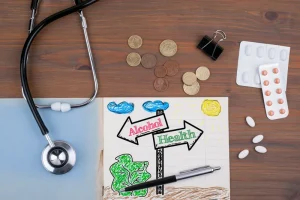
Little research has been focused on the suppository (anal insertion) or pessary (vaginal insertion) methods of administration, also known as “plugging”. These methods of administration are commonly carried out using an oral syringe. Heroin can be dissolved and withdrawn into an oral syringe which may then be lubricated and inserted into the anus or vagina before the plunger is pushed. The rectum or the vaginal canal is where the majority of the drug would likely be taken up, through the membranes lining their walls. American Addiction Centers (AAC) is committed to delivering original, truthful, accurate, unbiased, and medically current information.

Hypoxia may lead to brain damage, coma, and in some cases, death. This means they will need higher doses and more of it to produce the desired effects. As a result, heroin can cause what people describe as a rush or state of euphoria. This means they will need larger or more frequent doses to achieve the desired effects.
What Are the Short-Term Effects of Heroin Use?
While other opioids of recreational use produce only morphine, heroin also leaves 6-MAM, also a psycho-active metabolite. As you wait for an ambulance to arrive, use any naloxone (Narcan) you have on hand. This emergency medication can temporarily reverse the effects of an opioid overdose. These medications soften the cravings without causing euphoria. They help reset the brain’s thermostat, so it can stop thinking about opioids 24/7 and the hard work of recovery can begin.
Heroin Addiction, Withdrawal, and Detox
- The body becomes dependent on the drug, leading to severe withdrawal symptoms when use is discontinued.
- As your drug use increases, you may find that it’s increasingly difficult to go without the drug.
- It may be done by family and friends in consultation with a health care provider or mental health professional such as a licensed alcohol and drug counselor, or directed by an intervention professional.
- Your susceptibility to substance use disorder can depend on your individual biochemistry, genetics, and any underlying health conditions.
A single decision, a momentary escape, can lead down a path of destruction as heroin’s grasp tightens its hold, shattering lives and communities in its wake. It’s a tale as old as time, yet one that continues to unfold with devastating consequences across the globe. The allure of heroin, with its promise of euphoria and relief, masks a sinister reality that has torn families apart and left countless individuals struggling to reclaim their lives.

The stimulant is meant to intensify heroin’s euphoria while masking its sedation effects. Healthline does not endorse the use of any illegal substances, and we recognize abstaining from them is always the safest approach. However, we believe in providing heroin addiction treatment accessible and accurate information to reduce the harm that can occur when using. Heroin is metabolized to morphine and other metabolites which bind to opioid receptors in the brain. Experts say treatment could require six months to 20 years.

Other effects can include respiratory depression, constricted (“pinpoint”) pupils and nausea. Effects of overdose may include slow and shallow breathing, hypotension, blue lips and nails, muscle spasms, convulsions, coma, and possible death. Only one in five people who need treatment for drug use actually receive care, and only about half of those are given medication, experts say. Those given medications rarely receive them for long enough.
Recovery Residence Search
Content
Part of the NARR quality standards for every setting is having a Code of Ethics, which should incorporate the NARR Code of Ethics. ORH is an alliance for individuals and organizations operating quality recovery housing in Ohio. The bill requires a recovery residence to implement a client discharge and transfer policy to discharge or transfer a client from a recovery residence in certain circumstances.

Both the individual therapy and the women’s group have been VERY helpful and yield lots of suggestions as well as food for thought. The women’s group has been especially beneficial in that I’ve learned I am not the only one oxford house sober living with problems and it has shown camaraderie, understanding, and friendship. Residents will be well suited to take on student leadership positions and help to decide how to best continue to support recovery on Hawk Hill.
Healing Homes Network
At Trini Foundation, we provide access to safe spaces and community resources while integrating yoga and mindfulness into the recovery process. This community residence program, located in a quiet Albany neighborhood, serves 12 men who have both a mental illness and an addiction. The NUWAY Alliance is a nonprofit organization created in October 2019 to provide leadership, innovation, and recovery access in response to national and local trends in behavioral healthcare.
Vision
To establish a research-based, outcomes driven, sustainable impact in the recovery of young adults who are experiencing early episodes of mental illness. If your request is approved, DHS will place your recovery residence on the statewide Recovery Residence Registry (PDF) within 30 days. The Wisconsin Department of Health Services (DHS) will create a new voucher program, overseen by the Department of Administration (DOA) to support individuals in recovery who are experiencing or at risk for homelessness.
Hilltop Recovery Residence, Westminster, Vermont
This creates an environment of understanding and camaraderie—everyone striving toward a better future. Our mission is to support persons in recovery from addiction by improving their access to quality https://ecosoberhouse.com/s through standards, support services, placement, education, research and advocacy. A series of studies on Oxford Houses suggest they promote a host of positive outcomes at substantially lower costs compared to standard continuing care after residential treatment.
Students live in single rooms or share double rooms with same sex roommates who support each other’s recovery journey while forming lifelong friendships. Recovery Residence is an umbrella term that includes a range of alcohol and drug free living environments, including recovery homes and sober living homes, that use peer support and other supportive services, to promote addiction recovery. NUWAY Recovery Foundation provides recovery residence support up to $700.00 per month toward program fees at participating Recovery Residence partner for clients assessed as needing of safe, sober living environment while engaged in intensive outpatient treatment at NUWAY®. Deposit and any difference beyond covered monthly program fees are the responsibility of the client.
Spiritual Healing Sober Home
The policy must be approved by the recovery residence’s certifying body before a discharge or transfer may occur. Outreach’s Recovery Residence for Women is centrally located on Outreach’s Crooked Hill Campus in Brentwood, Suffolk County. We believe all people seeking recovery-based housing should have access to both a safe and accommodating residence where they can live a healthy and rewarding life. We manage the ethical and safety standards for recovery residences in the State of Maine and certify residences based on the standards established by NARR. The guiding principles in this document are meant to provide an overarching framework that builds upon and extends the foundational policy and practice work that had guided the development of recovery housing to date.
Reviewers will be examining the recovery environment and ensuring the property and program meet the national quality standards. The National Alliance for Recovery Residences creates national quality standards for recovery houses. DMHA is basing most of the certification requirements and on-site inspection requirements on the most current NARR quality standards.
The Recovery Residence Association is closely monitoring the COVID-19 situation, and we are taking the necessary precautions to ensure the health and safety of our staff, operators, partners, and community members. Please reach out to the RRA staff for availability and any schedule/event changes, and contact your local healthcare provider or community resources such as for more information on COVID-19 in your community visit our resource page or the San Diego County website, -sd.com. Student Outreach & Support offers individual support, guidance and referral to helpful resources for all students during critical incidents and difficult situations.

SAMHSA recommends following these Ten Guiding Principles to guide recovery house operators, stakeholders and states in enacting laws designed to provide the greatest level of resident care and safety possible. The Office of Residence Life at Saint Joseph’s University strives to provide secure, academically focused housing which fosters a community of civility and respect and supports a positive living-learning environment consistent with Ignatian ideals. Allies of Recovery supports anyone affected by substance use disorder or in recovery by spreading awareness through open dialogue, providing a supportive environment and a safe zone. The bill requires the certifying body to establish a grievance and appeal process for clients to use when they believe they have been wrongfully discharged or transferred from a recovery residence.
Judy’s Place Recovery Homes
The Recovery Residence at Hogan Hall is a unique residential opportunity for Saint Joseph’s students in active recovery to live in a supportive community environment, all while maintaining their academic life on Hawk Hill. This innovative effort is the first-of-its-kind in the Philadelphia region and serves as the centerpiece of Saint Joseph’s collegiate recovery program, offering support for every facet of a student’s residential experience. The residence encourages health and wellness in mind, body and spirit for our students in recovery. In addition to living in furnished, on campus housing on the beautiful USF campus, The Haven offers recovery support services and recreation and social activities for students who are committed to their college education while learning to lead a full and satisfying recovery lifestyle. Staffed by a dedicated Haven Recovery Coach and live-in House Managers who are students in recovery themselves, parents can be assured that their student is living in a safe, supportive and secure environment.
It provides overarching leadership and management to NUWAY®, the NUWAY Recovery Foundation, Cochran Recovery Services, and The Gables. Additionally, the NUWAY Alliance is available to partner with aligned organizations needing leadership and management to support recovery access. Once DMHA Housing Team has received a response from your organization concerning any required quality improvements, they will determine if your certification will be approved or denied. The DMHA Housing Team will notify you within 15 business days about your certification approval/denial.
Each prospective member of the Collegiate Recovery Program will participate in an admissions process that helps them to get to know our staff and community and learn about all that we have to offer to support their experience at SJU. The process also allows us to learn more about how our community can best support the student’s individual recovery goals. Participation in an outpatient program is required, and transportation is available for residents to and from Outreach’s outpatient program in Brentwood, which provides enhanced outpatient treatment for women.
- The bill requires the certifying body to establish a grievance and appeal process for clients to use when they believe they have been wrongfully discharged or transferred from a recovery residence.
- At a Refresh Recovery Residence, you’ll find support in every area, so your attention can be squarely on getting sober and making a strong start in recovery.
- The women’s group has been especially beneficial in that I’ve learned I am not the only one with problems and it has shown camaraderie, understanding, and friendship.
Located near the Student Health and Wellness building, and the Collegiate Recovery Program space, the house features a full kitchen, living area, and meeting space. On-Grounds housing agreements cover the nine-month academic year, with the option to arrange summer accommodations. Please carefully review all of the credential documents before applying for certification.
Drink Alcohol Only in Moderation
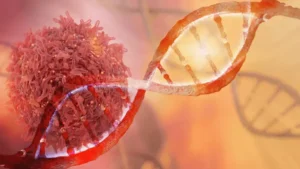
It is important to be aware of these measures to better control the amount consumed. While consuming alcohol in moderation appears to have some benefits, it is important to remember that too much can be devastating for overall health and even life-threatening in the long run. In 2012, results of a study of swine with high cholesterol levels suggested that moderate consumption of both vodka and wine may reduce cardiovascular risk, with wine offering greater protection. Sometimes, abstaining from one of the world’s most common pastimes is the best way to go. Refraining from alcohol can help you reset mentally, reduce your caloric intake, improve your sleep patterns, and make you feel all around better.
Heart Health

Take some time to decide which days are OK to have a drink and which days are off-limits. Whether you carry a physical card in your wallet or use your smartphone, track your drinks to get a better handle on your consumption. Similarly, make sure your drinks are standard sizes (12 ounces of regular beer, 5 ounces of wine, or 1.5 ounces of distilled spirits). This is easier to do at home, but you can try communicating your needs to the bartender or waiter.
Are you ready to try something different? Are you ready to learn to change your mindset around alcohol and get control?

This type of moderation program may be particularly helpful for those concerned about alcohol abuse (i.e., not alcohol dependence). A lot of people decide to start drinking in moderation for many different reasons. Perhaps you want to spend less money, reduce the chances of over-imbibing, or get in better shape. Whatever the reason, there are https://ecosoberhouse.com/ a lot of great tips to help you change your habits and cut back on your drinking. Start being mindful of your current drinking habits and identify any triggers that make you want to drink.
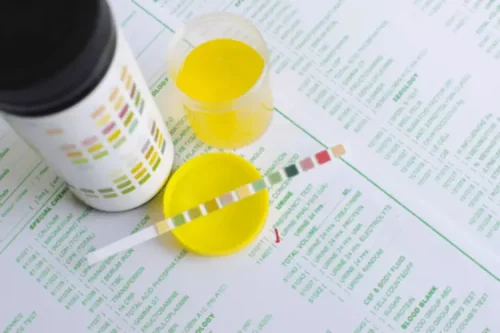
Opt for healthier drinks.
Neither Schaffner nor Rahman could explain why light drinkers have a how to drink moderately lower risk of all-cause mortality than nondrinkers. But they agreed that alcohol is a major public health challenge, not only in the U.S. but around the world. There are 140,000 alcohol-related deaths in this country each year, Rahman said, and there were 2.8 million deaths globally in 2016, according to the Lancet paper. There are also drugs such as disulfiram that will prevent you from consuming alcohol or naltrexone that blocks the “high” created by alcohol consumption can also help. In order to obtain testing, unless agreed to voluntarily, a court will need some anecdotal evidence to support the ordering of drug/alcohol testing.

Instead of a vodka soda, order a soda water with a splash of lime. And if and when you do decide to have a drink, DO NOT get behind the wheel. Mixed drinks are deliciously sweet, and while their taste makes them desirable, their sugar levels make them some of the most unhealthy boozy beverages you can consume. According to Livestrong, a margarita contains 400 calories, a long island, 425, a white Russian, 500, a piña colada is a whopping 600 calories. You can easily clock in a couple days’ worth of calories in one night when ordering these high-calorie, high-sugar concoctions. Instead, go neat or mix with water, soda water, or opt for a glass of wine.
- Keep in mind that the size of the drink and the percent of alcohol makes a difference.
- Decide how many days a week you’ll drink and how much you’ll drink on those days.
- It is very important to note that this is different from alcoholism or addiction to alcohol.
- Planning exactly how you’ll say no—in a quick, polite, and convincing way—can make it easier for you to stick with your convictions and avoid a spiral of uncomfortable excuses.
- For over 20 years Dr. Umhau was a senior clinical investigator at the National Institute on Alcohol Abuse and Alcoholism of the National Institutes of Health (NIH).
- If you think you may be estimating to avoiding actually counting because you feel ashamed or regretful about the count, try to be accurate anyway and congratulate yourself for increasing your awareness at all.
Child & Teen Health
For example, a 12-ounce bottle of beer has about 150 calories. So many people are invested in drinking less alcohol for one reason or another, and in response, the zero-proof spirit market has exploded. Tons of beverage brands offer delicious non-alcoholic drink options from Surely Wines and Ritual Zero Proof Spirits to Little Saints and even Heineken. Alcohol’s inflammatory effects are particularly pronounced in the gut, negatively impacting the intestinal lining and the balance of microorganisms making up the gut microbiome.
How to drink alcohol moderately and responsibly
Make sure you’ve eaten before you start drinking to reduce the risks and better control the effects of alcohol. Whether it’s the number of drinks you’ll have or the frequency of drinking, these limits will help you stay in the moderation zone. Alcohol can cause liver damage, heart disease, high blood pressure, and increased risks of certain cancers. In addition to the physical risks, excessive consumption can lead to psychological problems, including depression and anxiety. It can also contribute to risky behaviors and conflict in personal and professional relationships.
The hardest part of being sober is explaining it to you Heres why you shouldnt ask.
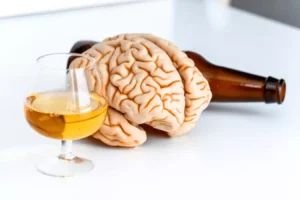
Having a chaotic or disorganized lifestyle can also hinder your recovery. It’s important to develop a structured daily and weekly schedule and stick to it. Sometimes I feel like sobriety’s Andy Rooney – the ironic, curmudgeon of the blogging set, pointing out the pitfalls and snafus that no one else will tell the world about quitting drinking. I have been known to sniff at the sophomoric crowing of those who extoll the benefits of living clean and sober.
My Mental Health Is Stronger
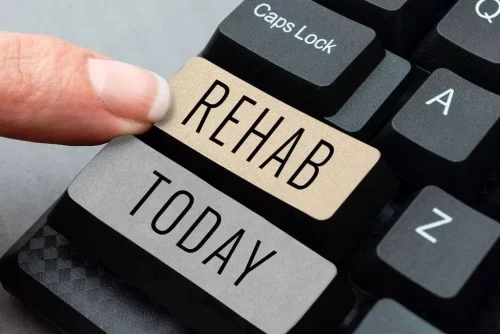
This isn’t to say that all of your friends will be threatened, or that all of your friendships will change. Some will certainly remain, but even those aren’t necessarily long-game friendships. Sobriety being sober sucks is kind of like the fast-pass line at Disneyland, except the ride is growing up. If you’re like most drinkers, you’ve likely surrounded yourself at some point with a group of people who also drink.
Things I’ve Learned Being The Only Sober Person In The Room

People in recovery from a substance use disorder frequently have problems meeting work-related responsibilities, maintaining employment, and managing money. If you were active in your addiction for a period of time, you may have developed financial problems. A mental health professional can help you cope with some of the challenges you’ll face on your path to sobriety. If PAWS https://ecosoberhouse.com/ is severe or if you’re experiencing prolonged symptoms, a medical professional can help you work through them and remain in recovery without relapse. Post-acute withdrawal syndrome (PAWS) involves withdrawal symptoms that persist past the detox period. Such symptoms are often related to mood and may include irritability, anxiety, depression, sleep problems, and fatigue.
- One 2020 study found potential benefits of combining in-person and online support methods.
- And I just didn’t find it to be that healthy of a place to be.
- Or it could be that you’ve developed a physical health problem that you know is probably due to drinking and you want to make positive changes before things get worse.
- This time, I feel like there’s so much less media coverage of Trump because people are too exhausted hearing about the threat of him.
Drunk people are all secretly Beyoncé’s backup dancers.

They don’t worry about paying bills, providing for anyone, or how their stocks are doing. If you’re involved in a 12-step program, you likely already know the importance of milestones. One common mistake for those who are new to alcohol and drug recovery is substituting a new compulsive behavior for their old one. People new to recovery can find themselves approaching their new diet, exercise program, job, and even participation in support groups with a compulsion that echoes addiction.
- Hear from real people who have struggled with substance misuse.
- I mean, I never made and rode a bike with golf clubs attached to it, but I’m sure I did whatever the “me” equivalent of that was.
- I think I’ve come to believe that the rules of the profession really are there for a reason.
Because I was writing for the web — I wasn’t writing for the print magazine — it had to be fast. It would be, like, three days late, and the news cycle would already have moved on. I think I also just reached a point where I wanted to deal with whatever feeling it was that I was suppressing with the drug. I felt like I finally had the time — I got a book deal and was able to quit my job, so I didn’t have to perform perfectly every day.
Drunk people be like: IDGAF.

Step 6: Build Support for Recovery
Do You Lose Weight When You Quit Drinking?
Avoid Old Habits and Toxic Relationships
What Did We Learn from Our Study on Sober Living Houses and Where Do We Go from Here? PMC
Content
The tools that individuals learn in intensive rehab programs may set them up for more sustainable success in a sober living house. Recovery and sober living homes can empower individuals to get the help they https://www.healthworkscollective.com/how-choose-sober-house-tips-to-focus-on/ need, and the aftercare required to complete rehabilitation. Having a solid support system and a safe living environment allows residents to grow, and to get the accountability they need to sustain sobriety.
We are all related through a common disease and a deep desire to establish a new life based on self respect, integrity and dedication to substance free living while helping others. The majority of the buildings that are owned by Sober Living America provide the patient access to a pool. Some of the facilities also provide additional amenities, but no specific information on a per-facility level is offered on the company’s official website. Any patient who would like to know more about the amenities at the facility that is near their location should pay them a visit to see the apartment building for themselves and talk to the admissions staff if they would like to learn more.
Sober House Living: For Those In Early Recovery
Here’s a list of basic sober living rules that many homes enforce. I recently moved into Real Recovery and I have been very impressed! I came from a sober living situation in St. Pete but moved back home to Bradenton. If you are looking for a clean, sober living environment – this is it! Finding quality AA meetings when you’re new to an area can feel like a daunting task, especially when not all meetings are created equal… some are undoubtedly better than others, right?
- We will expand nationally through chapters and affiliates and corporate locations by offering our systems and training to non-profits, churches, business leaders, and others.
- Finding quality AA meetings when you’re new to an area can feel like a daunting task, especially when not all meetings are created equal… some are undoubtedly better than others, right?
Multiple large screen TVs, high speed internet, and 3-1 printers available for use by any member, any time. As a next step in our research on SLHs we plan to assess how they are viewed by various stakeholder groups in the community, including house managers, neighbors, treatment professionals, and local government officials. Interviews sober house will elicit their knowledge about addiction, recovery, and community based recovery houses such as SLHs. Their perceptions of the strengths and weaknesses of SLHs in their communities should provide data that can be used to modify houses to improve acceptance and expand to serve more drug and alcohol dependent persons.
Sober Living America Amenities
Our rehab-style programs are designed to create a structured and therapeutic sober house living environment for men & women in early recovery to go on and live productive, useful lives steeped in self-esteem, honor and dignity. It’s important to know that sober living houses are not treatment centers. The staff doesn’t provide any clinical or medical services, but many residents attend outpatient treatment or participate in recovery-based groups while they live there. Secluded, yet easily assessable to necessities with all essentials provided – and more! Build a truly better you at Soberfits state-of-the-art residence, fully equipped with all the resources you need to support your recovery including an in-house fitness center, sauna, and steam room. Weekly house meetings and random drug testing are performed by live-in house staff that promote 12 step and non-12 step approaches to recovery in the spacious living room by the fireplace.

Getting sober on your own is not only dangerous during the initial detox, it is also more likely to result in a relapse later on. Addiction treatment centers provide a monitored environment where you will get the medical attention you need, as well as the emotional support to overcome drug or alcohol abuse. Try to choose a quality sober living home located outside of your hometown as well. Being farther away from the environment that initially drove an addiction can help individuals avoid relapse. Someone’s family and friends could become a barrier to recovery, or may even trigger relapse. Conversely, having a change of scenery and being safely away from temptation can facilitate faster healing.
Study reveals genes associated with heavy drinking and alcoholism: Unique genetic variants may inform future treatments for each alcohol disorder ScienceDaily
Even with a genetic predisposition, a person can still inherit a tendency toward AUD as a result of the culture they are emersed in. Also, people who have a genetic predisposition to AUD may experience fewer or different warning signals from their body and brain when they need to stop drinking. Finally, abnormal levels of serotonin (a mood-regulating neurotransmitter) have been linked to people who are predisposed to an AUD.
What are the chances of inheriting alcoholism?
Around 50% to 60% of a person's risk for alcoholism is due to genetic factors. This means that genetics play a large role in alcoholism. But environmental factors and the interactions between genetics and the environment are also important.
Risk and protective factors are either environmental or biological. While in the depths of one’s mind, it might be easy to feel isolated and solitary. If you’re feeling hopeless, look around, find those who can lend a hand, and then take the first move. You can get your health to revamp after you get treated for the ailments such as alcohol abuse.
Addiction Hotline
As larger samples are
assembled and more variants analyzed, a much fuller picture of the many genes
and pathways that impact risk will be discovered. There are also behavioral genes passed down that could influence a propensity for alcoholism. Mental illnesses, such as depression and schizophrenia, are more common in people with a family history of these disorders. People with mental illness have a higher risk of turning to substance abuse as a way of coping. Mental disorders can be hereditary (and environmental), which partially illuminates the complex link between genetics and addiction. While children of alcoholics have a two to four times higher chance of issues with alcohol abuse later in life, a survey in 2011 found that only about 46% of them actually developed an alcohol use disorder.
Genes are made up of DNA, the hereditary material that’s inherited from parents. Reciprocal drinking is common early in relationships, and it is often hard to discern if someone is not aware of the signs. However, as the relationship progresses and you get to know each other better, if you notice that the drinking behaviors are problematic and don’t say anything, your inaction is enabling the problem to continue. The expression ‘alcoholic parent, alcoholic child’ was common for generations, but we’re hoping to help dispel this notion in multiple ways. The inaccuracy of that statement is that it is absolute; it infers that, as a rule, a child of an alcoholic will always be an alcoholic – which could be damaging for those who have an alcoholic parent. No, you are not destined to become an alcoholic just because your parents were an alcoholic.
Signs Your Kid is Using Drugs
If you deal with chronic stress, whether from a job, relationships, or another source, your alcohol use will likely increase in amount and frequency. This consistent reliance on alcohol to cope puts you at a higher risk of AUD. There’s also a belief that mental health disorders can contribute to substance use disorders. For example, if someone is depressed or dealing with a condition such as PTSD, they may drink to ease the symptoms of those mental health disorders. If you have an increased risk of an alcohol use disorder, you can get a treatment program as we also offer an outpatient program for part-time hospitalization.
- The study found that among identical male twins, if one had an alcohol use disorder, there was a 50 percent likelihood that the other would at some point in his lifetime.
- The estimate is that 50-60% of the risk for alcohol use disorder is genetically determined.5 And that estimate is the same for men and women.
- Based on these findings, heredity is one of the risk factors that predispose a person to AUD.
- While heredity and genetics are closely linked words, they can mean different things from a medical perspective.
In fact – one estimate proposes that as many as 18 million adults in the country suffer from alcohol use disorder – or approximately one in 12 people. It makes the inevitability of familial alcoholism seem guaranteed when studies have shown a wide range of outcomes, including some individuals who never develop any symptoms or risks at all. Similarly, while there is a genetic component to alcohol tolerance, there have been largely inconclusive results about an alcohol dependence gene being hereditary. In 2006, the National Institute on Drug Abuse (NIDA) supported research that reviewed the human genome as part of an effort to identify Americans most at risk for developing an alcohol use disorder. Before this groundbreaking study, studies showed that alcohol abuse runs in families, but it could not point to the genetic basis of this finding. The study was possible because the Human Genome Project (2003) was able to identify every gene that exists in human DNA.
Factors That Influence and Contribute to Alcohol Addiction
Several notable studies have been conducted to answer this question. Getting treatment for a family member who suffers from alcohol use disorder is paramount for them to be healthy long-term. First and foremost, alcoholism is a disease that your loved one is struggling with. If you or someone you know is displaying any symptoms of AUD, do not hesitate to reach out for help. You may also experience a severe alcohol withdrawal condition called delirium tremens. This can cause fever, seizures, hallucinations (seeing or hearing things that aren’t there), agitation, and severe confusion.

The earlier a person begins to start drinking, the more likely they will develop an alcohol use disorder. There is no alcoholic gene that people inherit that ultimately determines they will engage in alcohol abuse but rather a variety of sober house genes that can ultimately lead to its development. When individuals are exposed to significant amounts of an addictive substance, over time, it is probable that the substance use will “hijack” or rewire the person’s brain to crave it.
Understanding the Genetics Behind Alcoholism
It’s important to remember that predisposition does not necessarily cause alcoholism to develop but rather contributes to the disease. Therefore, regardless of your predisposition, it’s possible to avoid alcoholism. Detoxing with the assistance of medical supervision, followed by participation in a rehab program, is the best approach for an individual struggling with alcohol addiction. Therapy and social support are critical components offered in a rehab program, and these treatments help the individual understand their addiction, avoid triggers and prevent relapse, and sustain a sober, healthy lifestyle. A study from 2008 by the National Institute on Alcohol Abuse and Alcoholism (NIAAA) examined research on AUD and a possible genetic association. The study found that genetic factors accounted for 40-60% of the variance among those who suffer from an AUD.
Environmental influences are other components that can lead to alcohol addiction, either singularly or as they interact with other factors. These can be related to childhood or upbringing, family environment, social situations, or with a significant other. There are also countless environmental factors (work, stress, relationships) that may lead to alcoholism. Alcohol use disorder (AUD) often seems to run in families, and we may hear about scientific studies of an “alcoholism gene.” Genetics certainly influence our likelihood of developing AUD, but the story isn’t so simple.
Those with moderate or severe disorders may need to go through a medically supervised detoxification program. And they may need to attend a series of therapy sessions in a treatment center. First, there may be something about identical twin males, genetically speaking, that makes them more likely to express an alcohol use disorder if one twin has one as compared to females (50 percent versus 30 percent). As researchers have noted, other genes (beyond the cluster that NIDA found) can play a role in the development of an alcohol use disorder. Second, if an identical twin has a sister or brother who has an alcohol use disorder, the odds are not that they will also develop one. Among males, it’s 50 percent, not 51 percent, which would mean that the development of an alcohol use disorder was more likely than not.
Where is alcoholism most common?
- Grenada.
- Czech Republic.
- France.
- Russia.
- Ireland.
- Luxembourg.
- Slovakia.
- Germany.
Is Alcoholism Hereditary? Alcoholism and Genetics Learn More
Content
Anecdotal evidence shows that alcohol misuse can result from genetic factors. Today, studies have shown that genes could predispose a person to alcohol dependence. Research like this could help identify people who have a higher risk of misusing alcohol so it can be mitigated and treated appropriately.
In these situations, your hereditary behaviors interact with your environment forming the basis of your decisions. If you are more prone to stress, this can make it harder to deal with unhealthy environmental risks, leading you to turn to alcohol to cope. Your specific set of genes may make you more prone to developing an unhealthy taste for alcoholic beverages. But your upbringing and environment can also influence your alcohol intake habits. Is there any scientific evidence that your genes may predispose you to become an alcoholic if your parents or grandparents are? While many studies have been done and experts agree that there is a hereditary connection, genetics is not the only factor and we don’t quite know the full impact it has on alcoholism.
Is Alcoholism Hereditary?
The analysis compared genetic variants from nearly 15,000 individuals diagnosed with alcohol dependence to nearly 38,000 people without such a diagnosis. A dual diagnosis (or a diagnosis of two or more co-occurring disorders) is a precipitous, dangerous situation where alcohol use and mental health issues are prone to exacerbate one another. Based on these findings, heredity is one of the risk factors that predispose a person to AUD. There are also countless environmental factors (work, stress, relationships) that may lead to alcoholism.
There is evidence that heavy episodic (binge) drinking, which results in
exposure of tissues to high levels of alcohol, is particularly harmful81, 87, 88. Binge drinking
is generally defined as a man consuming 5 standard drinks within 2 hours; women are typically smaller and have a lower percentage of body water, so 4 standard
drinks can reach similar alcohol levels. http://magicianstv.ru/hero_and_actors/olivia_taylor_dudley.php A standard drink is defined in the US as 12
ounces of beer, 5 ounces of wine or 1.5 ounces of spirits, all of which approximate
14 g of pure ethanol). Additionally, adult children of alcoholics may become alcoholics themselves in an attempt to understand their parental figures. While this cycle is destructive, there are several ways to put an end to it.
Genes contributing to the risk of alcohol dependence
You or your family member can get the proper help needed to overcome alcoholism or problematic drinking and are not bound to addiction by heredity or genetics. Support from family and friends will make this battle all the easier. It makes the inevitability of familial alcoholism seem guaranteed when studies have shown a wide range of outcomes, including some individuals who never develop any symptoms or risks at all.
Is addiction genetically inherited?
More than half of the differences in how likely people are to develop substance use problems stem from DNA differences, though it varies a little bit by substance. Research suggests alcohol addiction is about 50 percent heritable, while addiction to other drugs is as much as 70 percent heritable.
A family history of alcoholism does put you at higher risk of developing an alcohol use disorder, but it doesn’t guarantee that you’ll become addicted to alcohol or that you can’t break the cycle of addiction. Among those abusing alcohol, people who are genetically predisposed to alcoholism have a higher risk of developing an alcohol use disorder. Although people can inherit alcoholic tendencies, the development of an alcohol use disorder is also dependent on social and environmental factors. Some who have inherited genes making them susceptible to alcoholism are responsible drinkers or never take a drink in their life.
Support
Although alcohol consumption does not affect all people equally, according to scientists, different endorphin levels make these individuals more sensitive to alcohol and, therefore, more susceptible to being dependent. – Addiction is a chronic disease that affects the brain’s reward center, and researchers have long debated over possible genetic and hereditary contributors to addiction. Alcohol use disorder (also referred to as alcoholism or alcohol abuse) is a massive problem in the U.S. In fact – one estimate proposes that as many as 18 million adults in the country suffer from alcohol use disorder – or approximately one in 12 people.
What can lead to alcoholism?
- Steady drinking over time.
- Starting at an early age.
- Family history.
- Depression and other mental health problems.
- History of trauma.
- Having bariatric surgery.
- Social and cultural factors.
They would experience nausea, flushing, and rapid heartbeat even with moderate amounts of liquor. The unpleasant symptoms of drinking “protects” them from consuming too much alcohol. Alcohol use disorder has become a prevalent problem that affects even the youth.
Environmental Risk Factors for Alcohol Abuse
They may increase the overall risk by increasing drinking, or
reduce risk by reducing drinking. Some alleles that reduce heavy drinking can,
nevertheless, increase risk for disease in the subset of individuals who drink
heavily despite having them. The diverse study sample is notable, in that it included more http://communityhost.ru/2018/05/17/kogda-uxod-prevrashhaetsya-v-blazhenstvo-kosmetika-axava/ than 50,000 African-Americans, one of the largest genome-wide studies of this population. Scores from the Alcohol Use Disorder Identification Test-Consumption (AUDIT-C) screenings and AUD diagnoses were obtained from the same population (a total of 274,424 people) to conduct the GWAS for the two traits.
Alcohol-related risks can also be affected by environmental and social factors. Keep track of your daily basis, ask yourself – are my drinking habits safe or risky? It’s tricky to spot the difference between alcohol addiction and having a drink every once in awhile. ‘Harmful drinking’ happens when there is a pattern of drinking which can cause damage to your health. Pay attention to your daily or weekly habits; this can give you an idea of your patterns and indicate whether or not you have a drinking problem. Those with a high metabolism may convert food into energy more quickly and easily.
Understanding Genetics
If you have multiple relatives with alcohol addictions or other substance use disorders, you may have inherited the genes that put you at risk. The more family members (related by birth) you have with an alcohol problem, the higher your risk. However, even those with a high genetic risk to substance abuse must first be driven by a nonhereditary factor to do it.

How to Help Someone with Drug Addiction
Content
- Intervention Strategies and Techniques
- Refuse to Enable While Offering Help
- Find a Treatment Program
- Why Is Seeking Addiction Treatment Important?
- Who should take part in an intervention?
- How to Help Someone with Drug Addiction
- What Should You Do If a Person Refuses Help After a Financial Intervention?
Dr. Thankachen sees patients with an array of disorders, including depression, bipolar illness, schizophrenia, anxiety, and dementia-related problems. Depending sober house on each unique situation, there are different intervention models that can be used. Two common models are the Johnson Model and the Family Systemic Model.
- These therapies went through experimental stages, refinements, and research until finally, enough studies were conducted showing their effectiveness that they became accepted practice.
- In some cases, a professional interventionist will work with the group to prepare for and mediate the event.
- From an anecdotal perspective, however, interventions have mixed reviews.
- Addiction causes physical changes in the brain that produce strong urges (cravings) to seek and use a substance that are difficult to resist.
You may want to speak with the professional about the steps they take before the intervention takes place. The group initially meets to discuss what they know about the confronted person’s drug abuse. They will usually write down a list or letter (or maybe several letters) to be read, highlighting how the addiction affects each of them individually. The letters may show how addiction has affected the addict’s own life as well. These prepared statements end by letting the person know that it’s their wish that he or she go to treatment. These individual realizations, group decisions, and the offer to help are all delivered in the midst of expressing a deep love or appreciation for the person.
Intervention Strategies and Techniques
As the term implies, an intervention is an organized effort to intervene in a situation to solve a complex or sensitive problem. During the intervention, participants will need to provide detailed information about why they care about the loved one’s drug and alcohol use or overall mental health. Adding this emotional connection is critical in showing the importance of treatment to you. It’s not uncommon for addicts to believe the addiction is controlled or only hurting themselves, this is an opportunity to show them how they are underestimating the abuse. While there are relatively few studies that prove the efficacy of interventions, there have been various studies showing that friends and family are often reluctant to conduct them. It’s not easy to confront someone you love about their destructive behavior, especially if you’re unsure how they’ll react.
To help someone you know who you think may have a substance use problem, you first need to get them screened. Your best bet is to talk to your own physician or employee assistance professional about referring you to someone who can help, such as a licensed substance abuse counselor or family therapist. It is not easy to live with someone who is using mind-altering substances. Taking steps to begin treatment and recovery can be a painful process. However, it is the only path that holds promise for something better.
Refuse to Enable While Offering Help
If left untreated, it commonly results in the occurrence of physical, psychological, and social health consequences, sadly sometimes fatal ones. First and foremost, if you have a professional counselor, ask for a referral. Otherwise, the Association of Intervention Specialists can be a great place to begin your search and find a professional interventionist near you. There’s a great deal you can plan for with an intervention, but there’s also the certainty of uncertainty.
If you determine that someone is in need of a financial intervention, your first question is whether you should employ a professional interventionist. The advantage is that such a person will help streamline and organize the process, providing valuable resources along the way. Financial interventions are perhaps most important in situations in which a relative or friend is either knowingly or unknowingly being financially exploited to pay for the perpetrator’s over-spending. A successful family-driven intervention to protect an elderly person was reported in the Oct. 4, 2021, issue of The Gerontologist.
Find a Treatment Program
The sooner the group works with an addiction intervention specialist, the better prepared they are. The specialist can not only help during preparation, they’re also trained to be more persuasive to an addicted person. Even if you’re not going to have a professional interventionist present when the meeting takes place, it is almost always better to seek drug intervention help during the planning process. They can help you understand the best way to approach your specific situation and increase the chances the person will accept help. However, if they say no, or become hostile when the idea is brought up, it may be time to hire a professional interventionist.

Treatment for Alcohol Problems: Finding and Getting Help National Institute on Alcohol Abuse and Alcoholism NIAAA
However, remember that relationships with health care providers how to store pee can take time to develop. When asked how alcohol problems are treated, people commonly think of 12-step programs or 28-day inpatient treatment centers but may have difficulty naming other options. In fact, there are many treatment options available thanks to significant advances in medical and behavioral research over the past decades.
How Effective is CBT for Alcohol Addiction?
If you know someone who has firsthand knowledge of a program, it may help to ask about their personal experience. Given the diverse biological processes that contribute to AUD, new medications are needed to provide a broader spectrum of treatment options. The evidence suggests that the free and flexible assistance provided by mutual-support groups can help people make and sustain beneficial changes and, thus, promote recovery. The good news is that no matter how severe the problem may seem, most people with AUD can benefit from some form of treatment. Many others substantially reduce their drinking and report fewer alcohol-related problems. Many people struggle with controlling their drinking at some point in their lives.
And they must continue to take training courses to keep their certification. This is the largest listing in the United States of licensed professional therapists. Once you find some programs you’re interested in, be sure to visit Step 2 for questions to ask and answers to listen for. Remember that changing long-standing patterns is hard, takes time, and requires repeated efforts. We usually experience setbacks along the way, learn from them, alcohol gallbladder and then keep going. Currently, there are three medications approved for AUD in the United States, and they are an effective and important aid in the treatment of people with this condition.
What Are the Types of Treatment for Alcohol Use Disorder?
Researchers found that participants who had a few drinks were better and faster at creative problem solving than their sober counterparts. The reason may be that alcohol tamps down working memory and therefore sparks people to think outside the box. Matching the right therapy to the individual is important to its success. It may also be helpful to determine whether the treatment will be adapted to meet changing needs as they arise.
- These individuals, sometimes called “almost alcoholics,” may not see the connection at first but would often benefit from help and support.
- Your provider may also be able to suggest an online self-guided program.
- Simply understanding the different options can be an important first step.
- Many people have completely wrong ideas about addiction, which can impede addicts from getting treatment and sustaining recovery.
- And there are a few approaches that can identify and combat drinking at an early stage.
For more information on symptoms, causes, and treatment of alcohol use disorder see our Diagnosis Dictionary. We’ll show you how to search trusted directories to find some that meet your needs. Research shows that most people who have alcohol problems are able to reduce their drinking or quit entirely. Alcohol is a powerful substance, with the capacity for positive experiences, such as bursts of creativity and fun, as well as harmful repercussions, such as addiction and health problems. Becoming dependent on alcohol can lead to challenges for both the mind and the body. Specialists who are board certified have thousands of hours of training and practice.
Types of Treatment
During the first few counseling sessions, the alcohol abuse counselor will talk to you about your drinking history, your lifestyle, and your feelings about starting treatment. Contact your primary care provider, health insurance plan, local health department, or employee assistance program for information about specialty treatment. Just like any other medical condition, people with substance use disorders deserve to have a range of treatment options available to them. Scientists are working to develop a larger menu of pharmaceutical treatments that could be tailored to individual needs. If you have any of these symptoms, alcohol may already be a cause for concern.
The important thing is to remain engaged in whatever method you choose. It is rare that someone would go to treatment once and then never drink again. More often, people try to quit or cut back over time, experience recurrences, learn from them, and then continue demi lovato age on their recovery journey.
If your insurance doesn’t cover all of your therapy costs or if you don’t have insurance, there are other ways to pay. Many therapy providers take federal insurance like Medicaid and Medicare. Some therapists also offer payment plans, scholarships, and sliding-scale fees based on income. Understanding the available treatment options—from behavioral therapies and medications to mutual-support groups—is the first step.
What’s the Difference Between Alcohol Abuse and Alcoholism? Addiction Treatment

Alcohol use disorder is a diagnosable condition characterized by excessive drinking that becomes uncontrollable and/or negatively impacts a person’s life or health. Alcoholism is no longer diagnosed but is instead an everyday term used to describe symptoms of AUD (7). AUD describes a diagnosable condition that involves drinking alcohol excessively or uncontrollably to the point that it negatively affects your life or health. AUD exists on a spectrum, meaning you can have a mild, moderate or severe case.
Understanding Alcohol Abuse: Implications and Health Effects
In other words, an individual will never be diagnosed with alcoholism by a psychiatrist or medical professional. Instead, individuals will be given the diagnosis of alcohol use disorder. However, people who attend an alcohol rehab program or 12-step recovery meetings will primarily hear the term alcoholism rather than AUD. People suffering from alcoholism often struggle with the majority of all of the symptoms of alcohol use disorder described in the DSM-V. In other words, people who have developed a tolerance to alcohol, experience symptoms of withdrawal when they do not drink, and have a difficult time quitting alcohol use could be described as an alcoholic.

Risks of alcohol use disorder
- Binge drinking is the consumption of multiple alcohol beverages (five or more for men, four or more for women) within a two-hour period.
- Key indicators of alcohol abuse include drinking in dangerous situations, experiencing recurring alcohol-related legal problems, and continuing to drink despite persistent interpersonal issues caused by alcohol.
Understanding the distinctions between alcohol abuse and alcoholism is crucial for recognizing the severity and implications of each condition. Alcohol abuse, often referred to as problem drinking, involves consuming alcohol in a way that negatively impacts one’s life and responsibilities, such as work or relationships. Key indicators of alcohol abuse include drinking in dangerous situations, experiencing recurring alcohol-related legal problems, and continuing to drink despite persistent interpersonal issues caused by alcohol. If you’re afraid your drinking problems are spiraling out of control, Alvarado Parkway Institute can help you get your life back on track. Whether you’re struggling with alcohol abuse or alcohol dependence, our alcohol rehab center in San Diego provides a safe, supportive, and caring environment for your road to recovery.
Articles Related to Alcoholism

Alcoholics Anonymous and other support groups bring together people with AUD in a safe space. Learn about what has (and hasn’t) worked for others and lean on them for help when times get tough. Doctors use the Diagnostic and Statistical Manual of Mental Disorders, Fifth Edition (DSM-5), to assess their patients for alcoholism. Males, college students, and people going through serious life events or trauma are more likely to experience AUD. As you recover from AUD, you may find it helpful to see a psychotherapist who uses cognitive behavioral therapy (CBT) techniques. CBT helps you modify your thoughts and actions, while also learning alternative coping mechanisms.
Understanding the distinction between alcohol abuse and alcoholism is crucial for identifying the severity of an individual’s alcohol-related issues. Alcohol abuse, often referred to as problem drinking, manifests when alcohol consumption leads to negative consequences in a person’s life, such as failing to fulfill obligations or encountering legal and social problems. Notably, alcohol abuse does not necessarily involve physical dependence or a compulsive need to drink. Alcoholism, also known as Alcohol use disorder (AUD), is a chronic disease characterized by an inability to manage drinking habits. Recognizing the red flags of alcoholism is crucial for early intervention and effective treatment. Key symptoms of alcoholism include a strong craving for alcohol, a lack of control over alcohol intake, and physical dependence, which leads to withdrawal symptoms when not drinking.
What Is the Difference Between Alcoholism and Alcohol Use Disorder?
Keep in mind that, while helpful in determining whether your current drinking habits could be problematic, these tests should not be considered a medical diagnosis. For example, researchers say people who develop alcohol abuse account for the majority of cases of alcohol disability and death.[5] But alcoholism is the more serious distinguish between alcohol abuse and alcoholism of the two conditions. There is no diagnostic questionnaire for alcohol abuse, but doctors might ask their patients how they feel about their drinking. They might also ask if their patients need help in cutting back on drinking. Supporting someone struggling with alcohol issues starts with compassion and understanding.
Getting Help for Someone Facing an Alcohol Use Disorder
Essentially, alcoholism is the point at which alcohol abuse becomes alcohol addiction. Alcoholism, medically known as alcohol use disorder (AUD), occurs when a person has formed a mental reliance on (addiction to) and/or a chemical dependency on alcohol. Excess drinking can affect your physical and mental health in many different ways. Though “alcoholism” and “alcoholic” are terms used casually by recovery programs like AA, alcoholism is no longer a diagnosable condition.
Serious symptoms that might indicate a life-threatening condition
Physicians screen for AUD using the DSM-5 criteria to measure your symptoms and whether you have a mild, moderate, or severe case of AUD (8). Alcohol use disorder (AUD) is now the clinically accepted term used by doctors and mental health professionals. Anxiety disorders are the most prevalent psychiatric disorders in the United States. The prevalence of AUD among persons treated for anxiety disorders is in the range of 20% to 40%,2,15 so it is important to be alert to signs of anxiety disorders (see below) in patients with AUD and vice versa. When used by a physician to screen patients for possible AUDs, two positive responses to the four CAGE questions indicate that further assessment is needed.

If AUD is not treated, it can increase your risk for serious health problems. After completing treatment for AUD, it’s possible https://ecosoberhouse.com/ to have a risk of relapse. It’s important to recognize warning signs and seek help if you’re concerned about having a relapse.
- From a psychological standpoint, alcoholism can lead to cognitive deficits, memory loss, and emotional disturbances.
- As with anxiety and mood disorders, it can help for a healthcare professional to create a timeline with the patient to clarify the sequence of the traumatic event(s), the onset of PTSD symptoms, and heavy alcohol use.
- Additionally, the terms “alcoholism” and “alcoholic” are primarily used in 12-step recovery programs like Alcoholics Anonymous (AA).
- Supporting someone struggling with alcohol issues starts with compassion and understanding.




